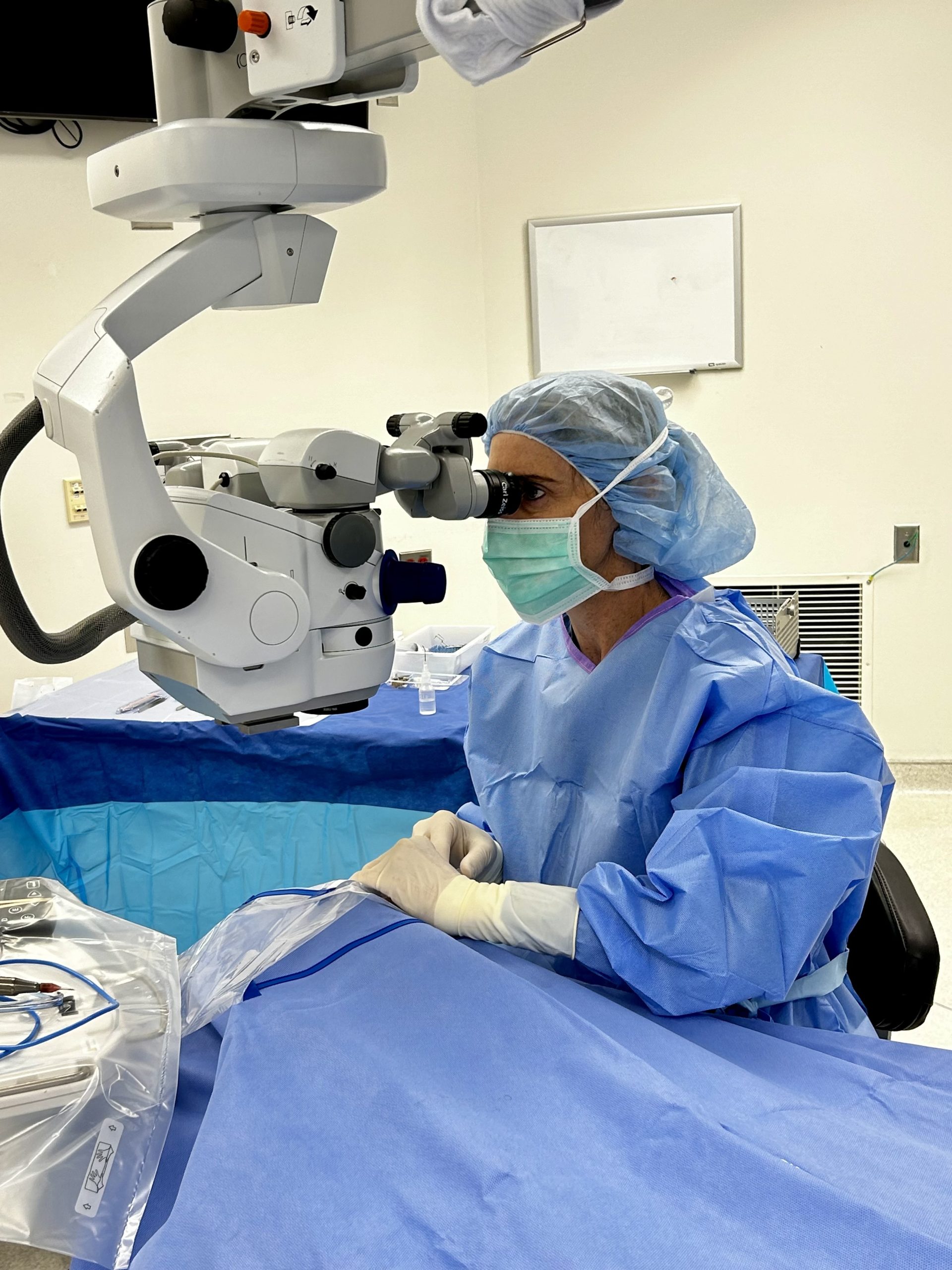WHAT IS A CATARACT?
The eye has a lens, like a camera, that focuses rays of light onto the retina. A cataract is a hardening or clouding of the eye’s natural crystalline lens. Cataracts develop as part of the normal aging process, causing progressive blurry central vision, glare and halos when driving at night. They can also be caused by certain disease processes or by the medications used to treat those conditions. Because cataracts change the way that light is bent through the lens and focused on the retina, early cataracts can often be addressed simply by changing your glasses prescription. Once vision is compromised and you are no longer able to do the things you enjoy, cataract surgery should be considered.
HOW IS CATARACT SURGERY DONE?
Dr. Cunningham performs modern day small incision cataract surgery at Glenbrook Hospital. The surgery is done under a microscope with topical anesthesia and IV sedation. A small incision is made at the edge of the cornea. It is a common misconception that a laser is used to remove a cataract. Instead, ultrasound is used to break up the cloudy lens into small pieces that are then aspirated from the eye. A permanent intraocular lens of the appropriate pre-determined power is then implanted to replace the natural lens. In most cases, the original incision is small enough that it self-seals and requires no sutures. The procedure typically takes about 15 minutes and is done on an outpatient basis, so you go home the same day with minimal restrictions. Most patients report no discomfort during cataract surgery, just an interesting “light show.” After surgery, a few patients feel a mild scratchy sensation which typically resolves on its own.
CAN CATARACTS RECUR AFTER SURGERY?
Cataracts cannot recur after surgery because the natural lens has been removed. In about 30% of patients, the capsule that holds the implant in place can become cloudy over time. This is called a “secondary cataract”. If vision is compromised by this scar tissue, a YAG laser is used to make an opening in the capsule. It is a painless in office procedure that takes less than 5 minutes with an immediate improvement in vision.
WHEN IS IT TIME TO REMOVE MY CATARACTS?
In years past, we waited until your cataracts were “ripe.” before removing them. This is no longer considered the standard of care. Advances in surgical techniques and the risk of complications that come with removing dense cataracts have made it possible to remove them earlier, without a major disruption to your lifestyle. You, as the patient, will be very involved in making that decision. If your vision is interfering with your activities of daily living and cannot be improved to your satisfaction with glasses, then it is time to consider surgery. Only a comprehensive exam and detailed discussion with your doctor can guide you.
PREMIUM INTRAOCULAR LENSES
Selecting the right implant can be an important decision for many people undergoing cataract surgery. Measurements are taken before surgery to determine what power lens implant you will receive. In the past, most patients required glasses or bifocals after surgery in order to see to their satisfaction. This is no longer the case with modern day premium intraocular lens implants.
Imagine the ability to drive, cook and read without glasses! Dr. Cunningham offers a variety of modern intraocular lens implants to reduce your dependence on glasses altogether. Many lens implants are designed to allow you to have good distance, intermediate and near vision without the strong dependence on glasses associated with traditional lens implants. Advances in technology also allow for the correction of long-standing astigmatism caused by an abnormal curvature of the cornea. Many people enjoy the vision they experienced in their 30’s without glasses! Talk with Dr. Cunningham to determine if you are a candidate for one of these innovative implants.

